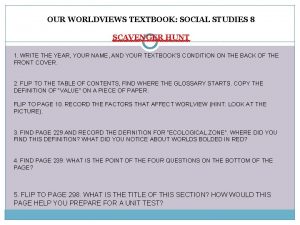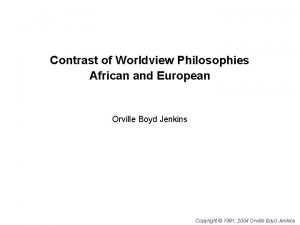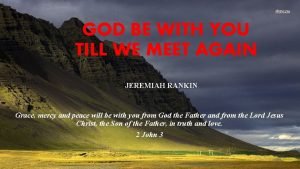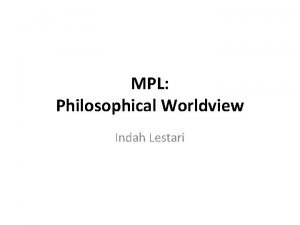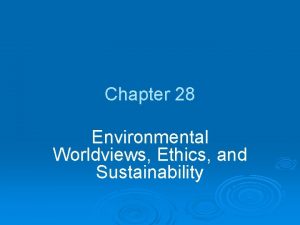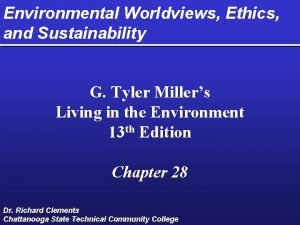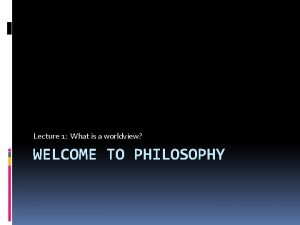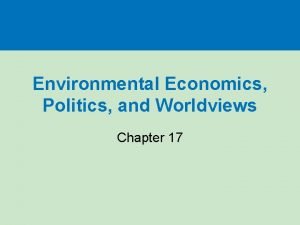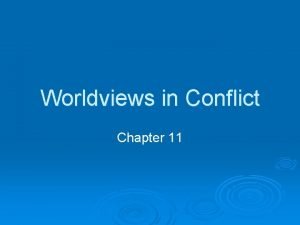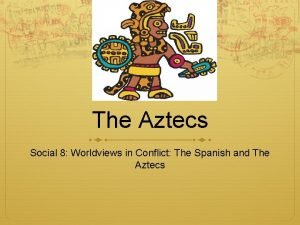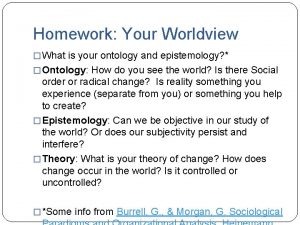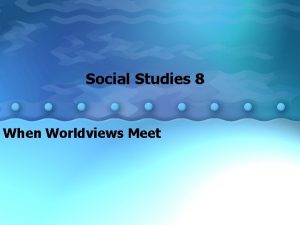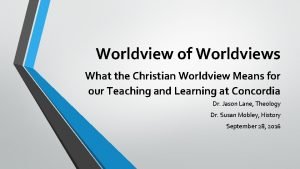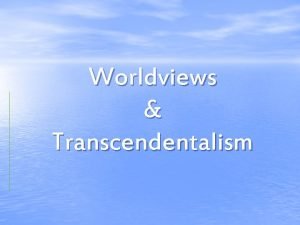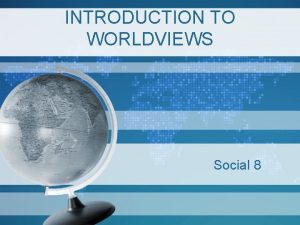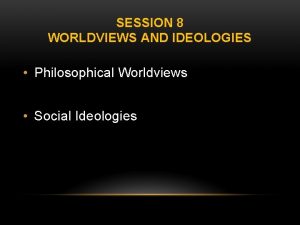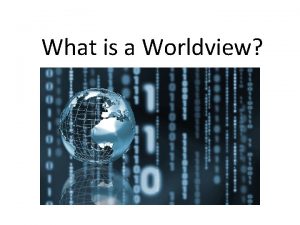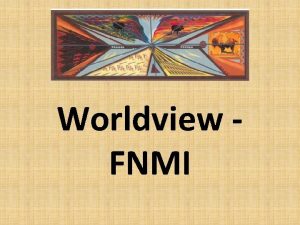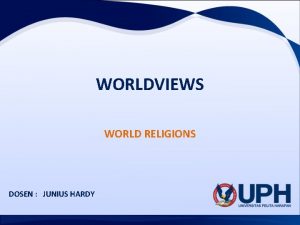Social Studies 8 When Worldviews Meet Worldview Worldview











- Slides: 11

Social Studies 8 When Worldviews Meet

Worldview • Worldview: A collection of beliefs about life and the universe held by an individual or group; the lens through which the world is viewed by an individual or group; the overall perspective from which the world is interpreted. Aztec Examples? ? ? Spanish Examples? ?

• Elements of a Worldview – The collection of beliefs within a worldview often includes views about the following: • • • human nature—beliefs about the basic make-up of people; e. g. , people are naturally good or naturally evil, outward or inward looking • • • the good life—the goals to strive for in living one’s life; e. g. , virtuous action, personal accomplishment, peace of mind, adventure, love • • • equality with others—belief about the status of some individuals or groups in relation to others; e. g. , all people are equal as opposed to some people deserve special privileges

• responsibilities to others—beliefs about the extent of obligations to others; e. g. , care for self first or care for others first • • • relationship between the individual and the state— beliefs about the balance between individual and collective rights; e. g. , individual rights are more important than the rights of the collective (society) or vice versa • • • relationship of humans with nature—beliefs about the way human beings should look on and act toward the environment; e. g. , preserving nature is more important than using natural resources to support human activity • • • sources of ethical wisdom—beliefs about the ultimate authority for ethical principles; e. g. , religious deity, science, natural rights.

Clues for Identifying Worldview • What are they?

• Step one: Study the images (Assignment Picture #1 and #2) above as typical scenes from the two mystery societies. • Step two: Analyze images of each society! You may want to use the chart above What I See and Think to record the evidence and conclusions for your images.

• Step three: Review identifying implied worldviews. Images can reveal much about a society’s worldview. Review the key elements of worldview below: • view of human nature • view of the good life • equality with others • responsibilities to others • relationship between the individual and the state • relationship of humans with nature • sources of ethical wisdom

• Step four: Analyze images for worldview elements. One cautionary note- your image may not contain clues about some elements of worldview. Take your time and develop a master list of the elements of worldview, summarizing what you have hypothesized about its society. • Step five: Predict the most likely results when these two societies meet. Remember, to make a plausible prediction you must have the following in place: • likely to happen given features of their respective worldviews • supported by details in the images.

• Step six: Share predictions. You are invited to share your predictions with the class. Post your conclusions in the Discussions area and take a look at the other conclusions posted there. • Step seven: Evaluate predictions.

Analyzing Images

The 5 W questions • Who are the people? (e. g. , soldiers, rulers, merchants, priests) • How do you know? (look for evidence) • What are they doing? (e. g. , praying, manufacturing, harvesting) • Where is the action taking place? (e. g. , palace courtyard, agricultural area, a ship) • When is it happening? (e. g. , long ago, in medieval times, during the Renaissance) • Why is it happening? (e. g. , securing food, protecting territory, accumulating wealth)
 Our worldview textbook
Our worldview textbook African worldview vs. european worldview
African worldview vs. european worldview Peace be with you till we meet again
Peace be with you till we meet again Paradigm shift from women studies to gender studies
Paradigm shift from women studies to gender studies Philosophical worldviews
Philosophical worldviews Stewardship worldview
Stewardship worldview Human centered worldview
Human centered worldview How are worldviews formed
How are worldviews formed Environmental wisdom
Environmental wisdom Chapter 11 worldviews in conflict
Chapter 11 worldviews in conflict Aztec world view
Aztec world view Major worldviews chart
Major worldviews chart
